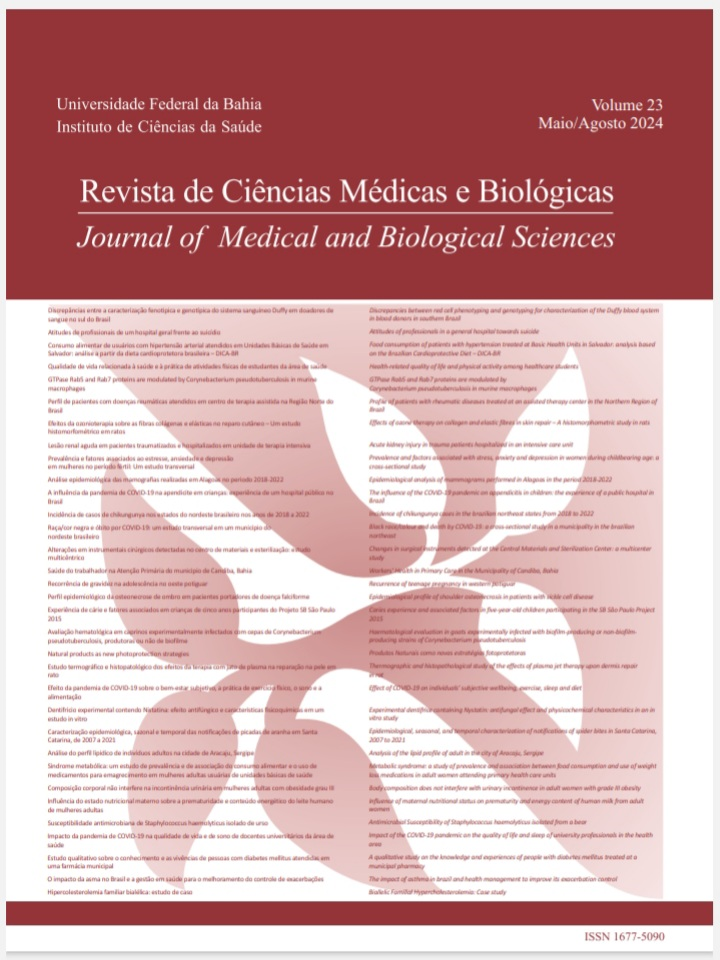Epidemiological profile of shoulder osteonecrosis in patients with sickle cell disease
DOI:
https://doi.org/10.9771/cmbio.v23i2.64146Keywords:
Public health; Orthopaedics; Regenerative medicineAbstract
Introduction: Sickle cell disease (SCD) is a genetic disorder prevalent among the population of Bahia state. This disease increases
susceptibility to several pathologies, including osteonecrosis. This study evaluates the epidemiological profile of shoulder osteonecrosis
in patients with SCD treated at the Humanitarian Health Outpatient Clinic of Professor Edgar Santos University Hospital. Methodology:
this is a cross-sectional, descriptive study conducted between January and May 2024. After approval by the Ethics Committee,
data from patients with osteonecrosis were collected from medical records, including information on age, gender, SCD diagnosis,
and cell therapy. Objective: this study aims to evaluate the prevalence of shoulder osteonecrosis in this population. Results: Of
the 62 patients, 11 had shoulder osteonecrosis. The overall mean age was 38 years. There was no significant association between
shoulder osteonecrosis and age, gender, or presence of SCD. Of these, 82% of patients with shoulder osteonecrosis received cellular
therapy. Conclusion: the high prevalence of shoulder osteonecrosis (17.7%) in the patients treated demonstrated the need for effective
preventive and therapeutic strategies to investigate and treat shoulder injuries. Cellular therapy proved relevant in managing these
patients, highlighting the importance of continuous monitoring.
Downloads
Downloads
Published
How to Cite
Issue
Section
License
Copyright (c) 2024 Journal of Medical and Biological Sciences

This work is licensed under a Creative Commons Attribution 4.0 International License.
The Journal of Medical and Biological Sciences reserves all copyrights of published works, including translations, allowing, however, their subsequent reproduction as transcription, with proper citation of source, through the Creative Commons license. The periodical has free and free access.


